Why Should You Buy the New Synology RS1221+ NAS?
As many of you are no doubt aware, there is a brand new Synology solution available to buy for those looking at a robust, compact, yet fully-featured rackmount 8-Bay solution. The recently released Synology RS1221+ NAS is a reinvention of the popular 8 drive RS1219+ from the brand and pulls numerous influences from previous releases on different 2020/2021 Rackstation devices and combines (almost) all of them into this new solution. Highly comparable to the likes of the DS1821+ and RS1219+ NAS, the RS1221+ is a great middle-ground for those of you that have been looking for a feature-rich system that is ready for photography, multimedia collections, virtual machine use and large-scale backup and surveillance for small and medium business users. So let’s take a moment and talk about whether this new NAS deserves your data. I want to tell you 5 reasons that you should buy the new Synology RS1221+ and five reasons you shouldn’t. Let get started.
5 Reasons You SHOULD Buy the Synology RS1221+ NAS drive
Here are five key reasons why the Synology RS1221+ should be your next NAS drive.
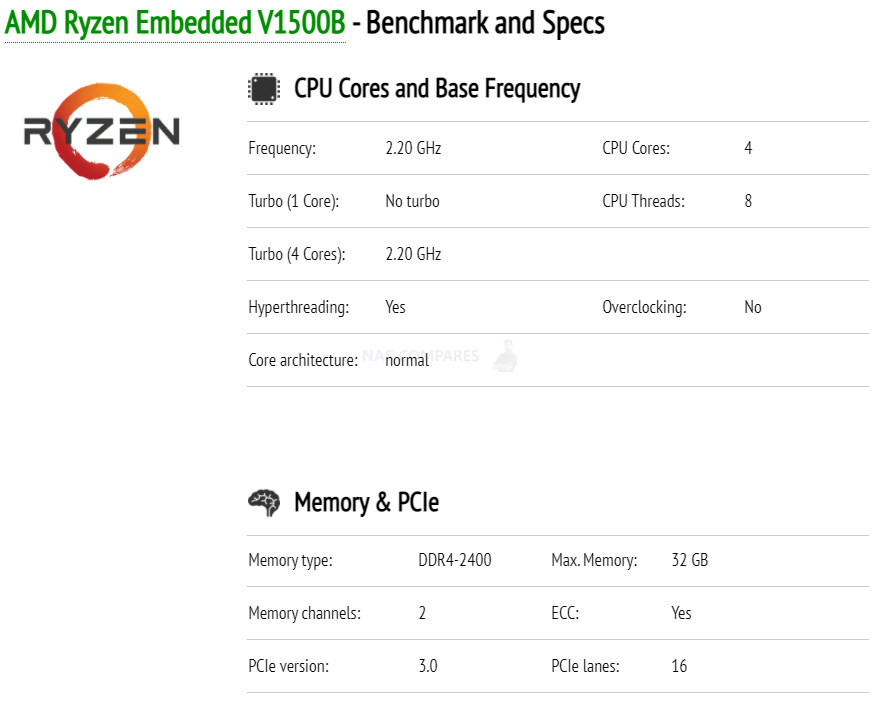
The RS1221+ NAS is the Latest Synology to Embrace the Ryzen Processor
Although the RS1221+ is not the first Synology NAS to embrace the Ryzen embedded V1500B processor (that would be the 6-Bay DS1621+), it is still very welcome as an update from the arguably tired Intel Atom C2538 and C3538 that has appeared in the last two generations of this product series. The quad-core 2.2Ghz CPU inside the RS1221+ is a big jump up in ability and although it does not feature embedded graphics (as you might find in an Intel Celeron) it DOES handle files remarkably well, despite the conservative price point. This processor has performed remarkably well in our testing of the Synology application suite, as well as with 3rd party tools like Plex Media Server and as a 10Gbe equipped (card sold see[erately of course) target LUN in previous videos. This processor is a 64bit x86 chip, so it can run the entire range of applications in the Synology Disktation Manager platform (currently 6.2 and 7.0 pubic beta now live) and even supports error code correction (ECC) DDR4 memory all the way up to 32GB for all those VMs and business class database/server usage.

The Synology RS1221+ Rackmount NAS is Half-Depth
Some people who have been considering the RS1221+ (and indeed the RS1219+ that came before it) are doing so because it is the latest in a growing type of rackmount server – namely half depth rackmounts. As the name might suggest, these are servers that have the classic build and definition of a rackmount server, but they do it at practically half the depth. This is important for users who want to deploy this rackmount in confined spaces (such as portable rack cabinets in vehicles, cupboard spaces, ceiling height shelving, etc). However, I don’t think the fact this is just 30cm deep (40cm in the 2 PSU version) warrants reason enough to recommend the RS1221+, no the reason I highlight this is because this NAS is the most powerful half-depth rack server I have ever seen. Now, let’s be relative here – the RS1221+ is not earth-shatteringly powerful, however, because of the relatively small space for airflow and the lower resource-hungry user that would typically require a compact rack, shallow rackmount NAS have always had 32bit ARM PSUs, little-to-no upgradability and short warranties.

The Synology RS1221+ NAS defies all of these expectations and arrives with that great VM and NVR ready CPU, up to 32GB of DDR4 ECC memory, the option of upgrading to 10Gbe and just generally is packed with the sort of hardware I never thought I would see in a 30cm rack! It really makes the device stand out against more expensive units that are only fractionally more powerful and really puts a lot of power into a small package!
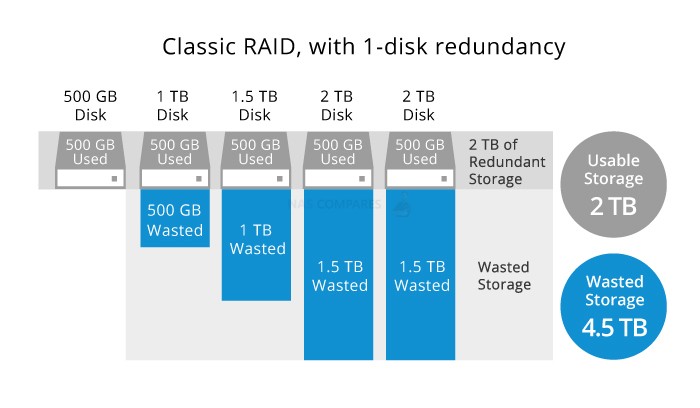 |
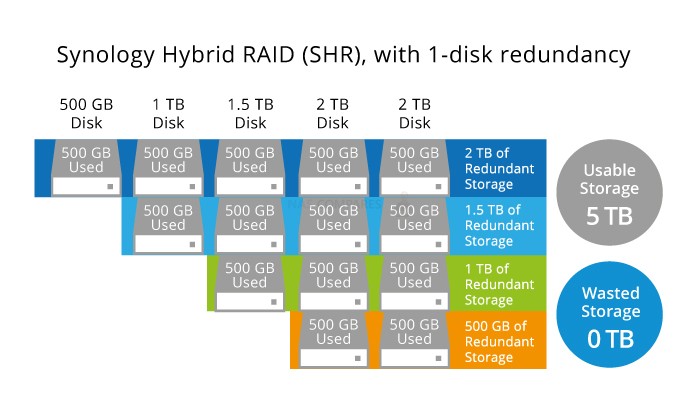 |
The Synology RS1221+ NAS Supports Synology Hybrid RAID (SHR)
One key feature that many buy Synology systems for is their fluid RAID configuration, known as Synology Hybrid RAID – or SHR. This allows the user to be a lot more flexible on Day 1 or Day 1000 about the storage media they want to install inside the device. Traditional RAID configurations, such as RAID 1, 5 and 6, will insist that you use drives of the same capacity, otherwise, it will class each drive in the array as the smallest available drive present. Most users will not see the benefits of SHR when they set up their device, but if you partially populate your NAS or years down the line want to start adding bigger drives, SHR will allow you to add/mix larger capacity drives and will be able to use the extra storage as more drives are added. You would think that such a popular feature would be on ALL Synology NAS, but the brand feels (see Q&A at the bottom) that because SHR has a slightly lower performance than traditional RAID (to calculate the more flexible storage array) and that most higher end-users will fully populate on day 1, that SHR is only available on home/prosumer devices. Luckily, it IS present on the RS1221+ NAS and with 8-Bays, it will be VERY useful to those that want to gradually populate their device and spread the cost of the storage investment over the years as they need to.
The Synology RS1221+ Has Excellent Cooling and Ventilation
Although I have already vaguely touched on this, it is worth expanding a little on the subject of cooling, ventilation and rackmounts. When it comes to a rack mount chassis (NAS or DAS in fact) they are designed to be deployed in a vertical alignment in an ever populating rack cabinet. Anyone that has ever been in proximity to the ‘main server’ area of a large shopping center, security center or indeed anywhere with a large amount of data being generated daily, will have seen the familiar towering rackmounts with numerous cables everywhere between boxes and switches, as well as the ungodly racket of fans buzzing. This all generates a tremendous amount of heat (which has a detrimental effect on the internal components), so sufficient cooling is required. Now, a shallow rackmount usually handles cooling pretty badly – from the limited internal space for air to circulate, to the placement of ventilation panels to enable air to pass through (but not placed to poorly as to stop the air travelling over the right areas) and that is one of the key reasons that till recently half-depth rackmount NAS use such limited CPU choices and hardware in general – things need to be ‘efficient’ with power use and heat generated. Likewise, cooling needs to be heavily based on horizontal airflow, as rackmounts are stacked vertically and rack cabinets will likely cut off the sides for ventilation. So, Fast forward to the Synology RS1221+ NAS and what we find is a figurative and near-literal breath of fresh air!
For a start, the system uses a micro-style controller board and this slots neatly over the area of physical space used for the storage media (which is more than 50% of the space used). The board is directly aligned with a horizontal front vent that takes up a 3rd of the RS1221+‘s height and allows air to pass both above and below the controller board – keeping a good distance from the storage media too. Likewise, the CPU uses a flatter by wider covering heatsink internally and the PSU is placed beneath the main board with an additional fan on either side. The result is a wonderfully well-flowed area of cooling throughout the device and the result that the device manages to keep cooler than expected, using less power in doing so and even does it producing comparatively less noise in active use than most 8-Bay Rackmount devices produce in idle! It’s still la rackmount and is going to be hungrier or power and make more now than a desktop 8-Bay like the DS1821+, but it is still a lovely piece of work here!
The Synology RS1221+ NAS Features a PCIe Gen 3 x8 Upgrade Slot
Many users were a pinch saddened by the lack of greater than gigabit connections on the RS1221+ NAS (see the 5 reasons against in a bit) but this system DOES arrive with a very impressive upgrade slot that allows you to install a range of network interface cad upgrades. What is especially impressive is that the system features PCIe Gen 3 x8 (so, up to 8000MB/s throughout between the card and the system on that lane) which means much larger than 10Gbe cards are possible here, across multiple ports. Yes, this is an 8-Bay device and therefore there are limits to the saturation you can have of that bandwidth BUT it is still a nice option to have and allows you to go all the way upto 40GbE cards if you really want too (if you factor in those 2 eSATA expansion slots and having a total 18 HDD/SSDs).
5 Reasons You SHOULD NOT Buy the Synology RS1221+ NAS drive
As good as I think the RS1221+ is, it is still not perfect, and there are several factors about this device that may convince you to buy another machine. Such as:

The Synology RS1221+ NAS Only Features 1Gbe
This is something that a number of buyers of new Synology NAS in 2020/2021 are getting a little glum about, that they are 1-Gigabit ethernet devices. Yes, the RS1221+ does feature four 1Gbe LAN ports and therefore there is the potential, with a supported managed switch, to reach 4Gbe. However, with many of their competitors producing hardware reaching 2.5Gbe and 5Gbe by default, as well as numerous 10Gbe solutions becoming available thanks to a growing trend for greater than gigabit environments, even at this price point, 1Gbe does seem a tad underwhelming. In fairness, not all people are going to take advantage of 1Gbe in the lifespan of this product, but it does somewhat limit the future potential of this NAS system to know that even if your network hardware environment gets bigger, you cannot exceed 1Gbe in a typical one-to-one connection on the RS1221+.
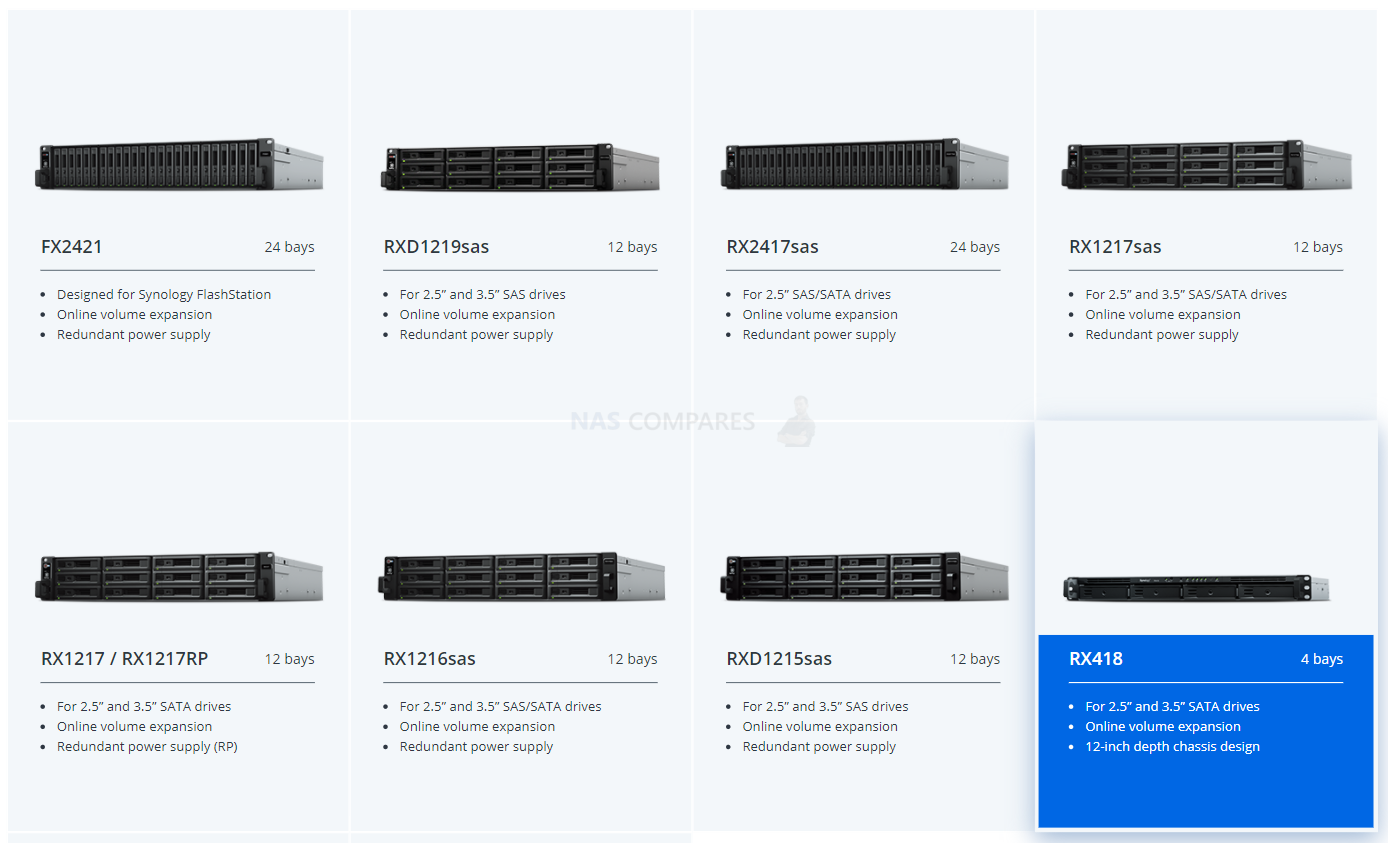
The Synology RS1221+ NAS ONLY Supports the RX418 Expansion, not the RX1217
A slight shortfall of the Synology RS1221+ that has been a long-running complaint for some in this product family, is that although the system can have its storage expanded, it is done with rear-mounted eSATA ports on the system. This expansion port allows you to connect an RX418 expansion device (4 bays) and therefore allows you to potentially store 12 bays of storage total. However, there is ALSO a 12-Bay expansion chassis (the RX1217) that uses an external technical SAS type connection that you CANNOT connect to the RS1221+. For many, the idea of using an extra chassis, with its own mains power and connected cable (admittedly screw-locked) in order to get just 4 more bays is much less desirable than a single expansion chassis that can storage 12 more bays and the lack of flexibility in expansion options is one that has been noted previously. There are arguments for this, of course, it allows a more gradual upgrade option (as opposed to investing in a full 12-Bay NAS rackmount on day 1 such as the RS2419+ or recently uncovered RS2421+), allowing the expanded 4 bays to have a better share of the 6GB/s they each have with the system, but it is less convincing for many. Even the option of a PCIe upgrade card to connect the 12 Bay expansion (perhaps sold as a bundle) would be nice one day.
The Synology RS1221+ NAS Does NOT feature m.2 NVMe
It may come across as a little disappointing for some (especially those who saw the launch of the DS1621+ and DS1821+, looking forward to the extension of that architecture to rackmount) but the RS1221+ does NOT feature on-board m.2 NVMe SSD bays for caching. Now you are not completely cut off from this feature, as you can install the E10M20-T1 or M2D20 card if you like (at an additional cost) and add it – but this is not ideal. Synology has been making hugely impressive moves with DSM 6.2 (and the DSM 7.0 beta) to show off their intelligent system and app background intelligent caching and it is just a shame that you will require an additional card in order to take advantage. This is not the end of the world, but the great PCIe Gen 3 x8 slot does feel a tad wasted on drive caching and not a dual-port card, FC upgrades (also being supported in DSM 7.0 later in 2021) and more.
|
Synology RS1221+ NAS
PRICE: £950+ inc.VAT |
Synology RS1221+ NAS
PRICE: £1225+ inc.VAT |
|
|
|
|
|
| CPU Model | AMD Ryzen V1500B | AMD Ryzen V1500B |
| CPU Architecture | 64-bit | 64-bit |
| CPU Frequency | 4-core 2.2 GHz | 4-core 2.2 GHz |
| System Memory | 4 GB DDR4 ECC SODIMM | 4 GB DDR4 ECC SODIMM |
| Memory Module Pre-installed | 4 GB (4 GB x 1) | 4 GB (4 GB x 1) |
| Total Memory Slots | 2 | 2 |
| Maximum Memory Capacity | 32 GB (16 GB x 2) | 32 GB (16 GB x 2) |
| Drive Bays | 8 | 8 |
| Maximum Drive Bays with Expansion Unit | 18 (DX517 x 2) | 12 (RX418 x 1) |
| M.2 Drive Slots | 2 (NVMe) | NO |
| Compatible Drive Type |
|
|
| Maximum Single Volume Size* | 108 TB | 108 TB |
| Hot Swappable Drive | ||
| RJ-45 1GbE LAN Port | 4 (with Link Aggregation / Failover support) | 4 (with Link Aggregation / Failover support) |
| USB 3.0 Port | 4 | 2 |
| eSATA Port | 2 | 1 |
| PCIe Expansion | 1 x Gen3 x8 slot (x4 link) | 1 x Gen3 x8 slot (x4 link) |
Synology RS1221+ NAS Comes Fewer Features than the £250-300 Cheaper DS1821+ NAS
Despite the praise I gave this device above, it is worth highlighting that the RS1221+ rackmount is not the only 8-Bay NAS than Synology have released in their 2021 range and just a month ago, they released the DS1821+ desktop solution. Although both units clearly have different end-users in mind (arguably both target Small Medium Business – SMB though) and are constructed very differently, there is still clearly noticeable differences. For a start, the DS1821+ has the NVMe SSD bays that were missing from the RS1221+ build. Additionally, the DS1821 (although having the same CPU and architecture/PCIe Lanes as each other) can be expanded by two 5 bay expansions (2x eSATA DX517), whilst the RS1221+ can only be expanded by the one RX418 4 bay expansion. Lastly, the DS1821+ provides these extra hardware options and is still at least £250 cheaper! Yes, the RS1221+ is a more unique shallow rackmount NAS and that in itself needs the R&D bills paid, but it is still a bit of a blow to compare these two and that they were released so close together.
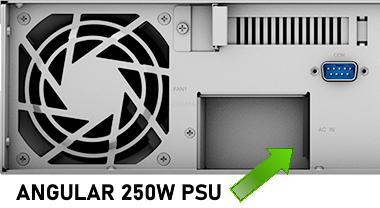
The PSU on the Synology RS1221+ NAS is Not Removable
One all area of contention for some that I normally would not highlight is the remarkably compact PSU on the RS1221+. Now, I get it – this is a compact NAS, half-depth, so the idea of a secluded mains power connector, that is angled into the chassis is a really good idea to help maintain that shallow depth in a shallow cabinet! It is a nice move and something I think Synology can be pleased with. However, in the last few years, one comment that has risen up here on the blog and on YouTube comments is the idea of removable PSUs. End users get it – a power supplier is not infallible and no one really holds it against a brand if a PSU fails at some point – the thing that users care about is the speed with which they can get a new PSU and get their NAS back up and running. Indeed, that motivation is what keeps redundant (dual) PSU rackmount NAS well into the new decade! But if you are someone who wants to easily be able to remove a PSU from a server and swap it out for a replacement you have bought in advance, or an RMA’d replacement quickly – you are not going to like the PSU on the RS1221+.
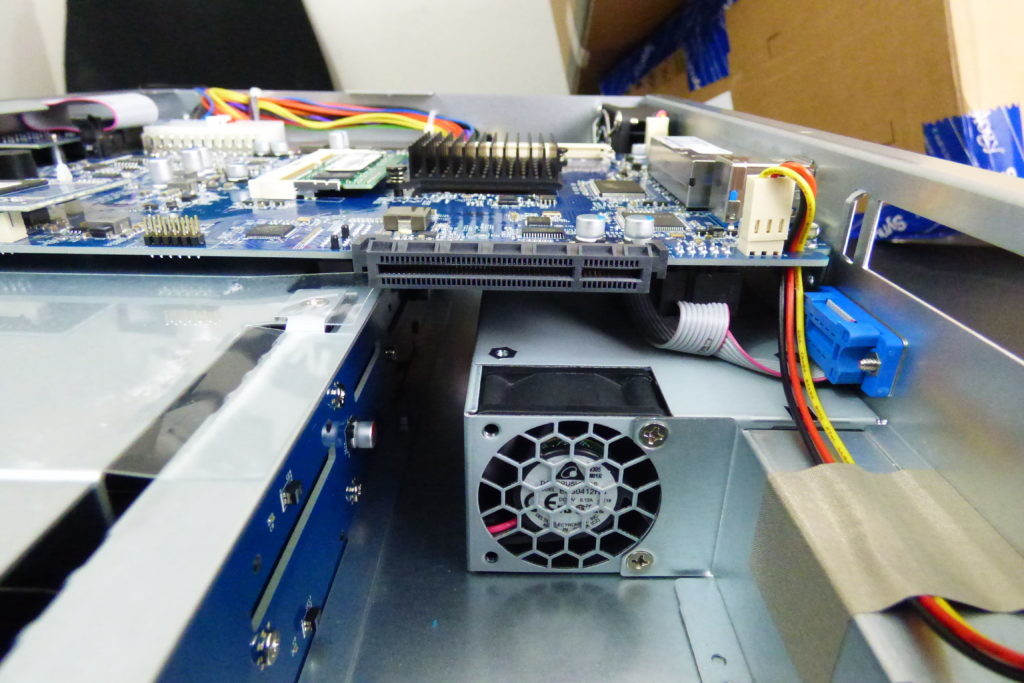
It is not easily removed and there is every possibility that (in the even of a warranty claim) you will need to send the whole unit back. More experienced tech guys will easily be able to gradually unscrew the PSU from it’s surroundings (and a few other bits around it) but for the less technologically brave, it is going to be quite a hassle to send the whole rackmount to Synology and back, just for a PSU. So, as I say, I actually quite like the PSU form and design here on the RS1221+, but I have to also acknowledge that it is not for everyone!
And there you have it, 5 reasons to buy the new Synology RS1221+ and 5 reasons not to. I hope you found this helpful and it helps you to choose the right NAS system for your home and business data storage.
Synology RS1221+ vs RS1219+ NAS Drive – Buy or Save?
If you are looking to buy a NAS drive from Synology right now, then (despite the RS1221+ NAS early appeal) a number of the key hardware specifications of the Synology RS1221+ NAS are available in the DS1621+ and DS1819+, and if the safety and integrity of your data are at stake in the short term, is just not worth waiting for. Below is how those NAS compare:
|
Synology RS1221+ NAS
|
Synology RS1219+ NAS
|
|
|
|
|
|
📧 SUBSCRIBE TO OUR NEWSLETTER 🔔
🔒 Join Inner Circle
Get an alert every time something gets added to this specific article!
This description contains links to Amazon. These links will take you to some of the products mentioned in today's content. As an Amazon Associate, I earn from qualifying purchases. Visit the NASCompares Deal Finder to find the best place to buy this device in your region, based on Service, Support and Reputation - Just Search for your NAS Drive in the Box Below
Need Advice on Data Storage from an Expert?
Finally, for free advice about your setup, just leave a message in the comments below here at NASCompares.com and we will get back to you. Need Help?
Where possible (and where appropriate) please provide as much information about your requirements, as then I can arrange the best answer and solution to your needs. Do not worry about your e-mail address being required, it will NOT be used in a mailing list and will NOT be used in any way other than to respond to your enquiry.
Need Help?
Where possible (and where appropriate) please provide as much information about your requirements, as then I can arrange the best answer and solution to your needs. Do not worry about your e-mail address being required, it will NOT be used in a mailing list and will NOT be used in any way other than to respond to your enquiry.

|
 |
Minisforum N5 NAS, 6 Months Later - Better, Worse, the Same?
Beelink ME Pro NAS Revealed
Best SOLID STORAGE NAS of 2025
Should You Worry About the NanoKVM Hidden Microphone?
Best Cheap NAS of 2025
Minisforum MS-02 Ultra - WHO IS THIS FOR??? (The First 48HRs)
Access content via Patreon or KO-FI
Discover more from NAS Compares
Subscribe to get the latest posts sent to your email.


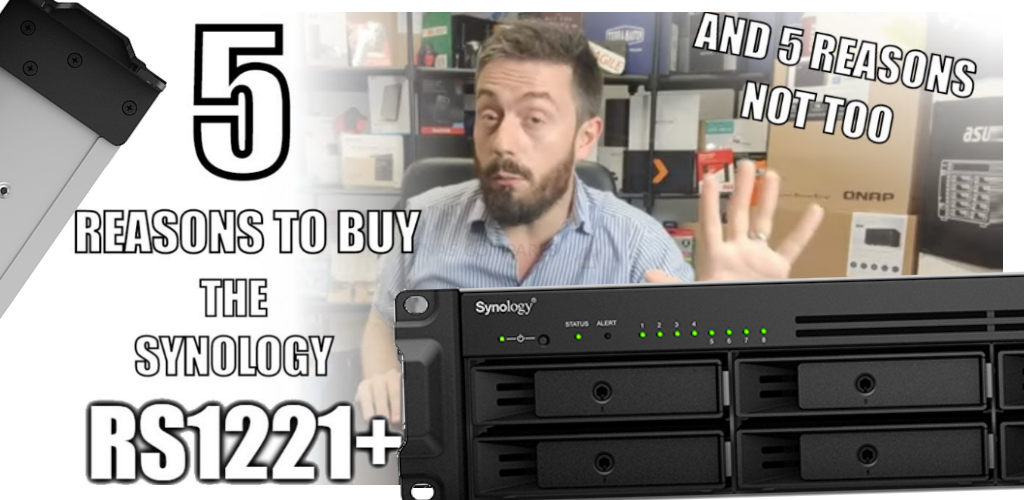
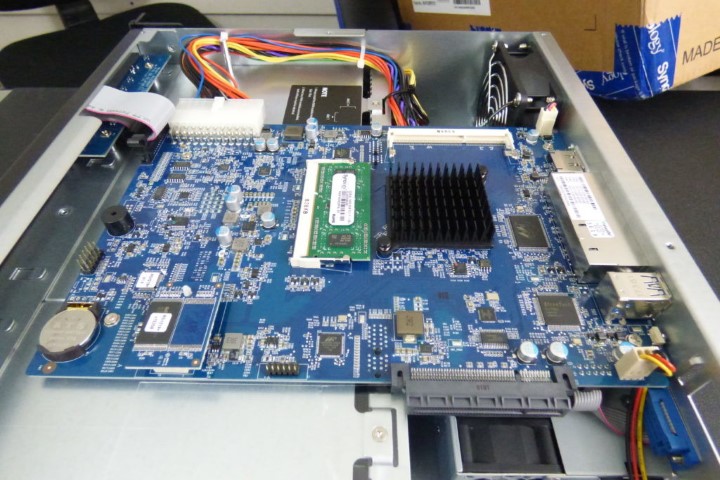
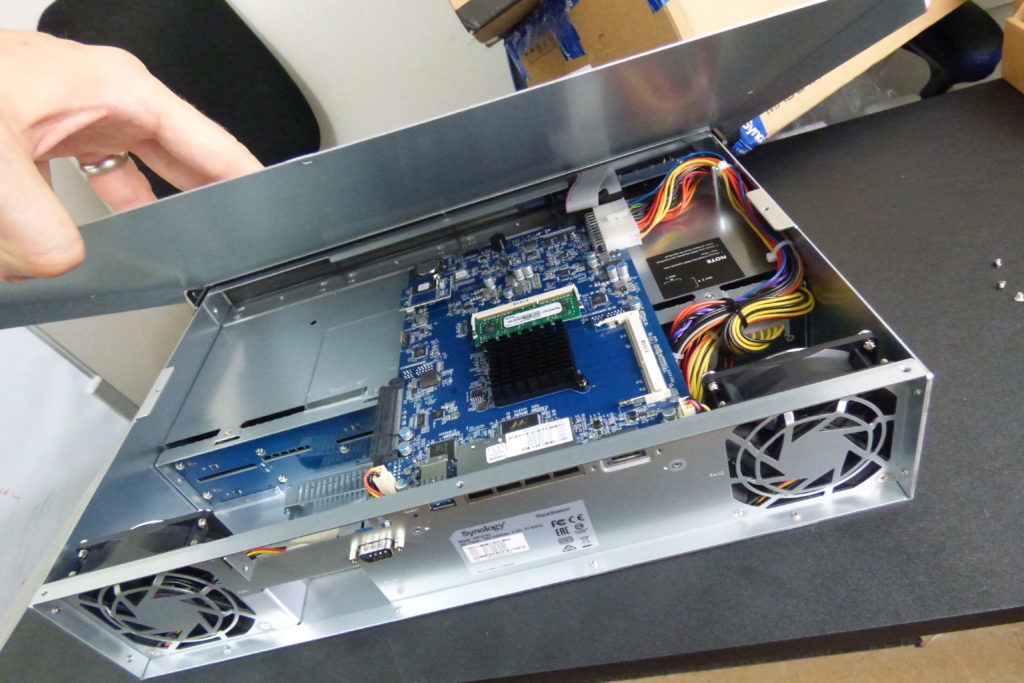
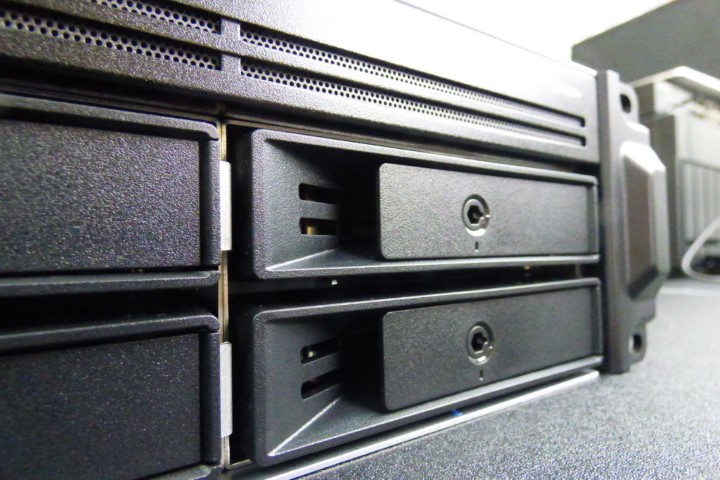
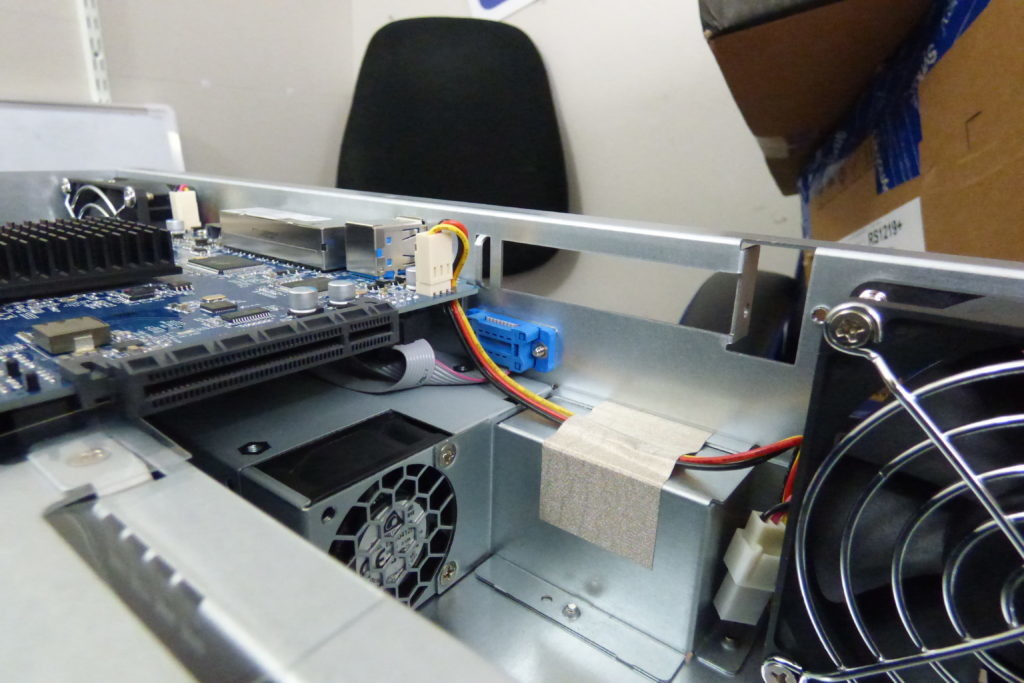
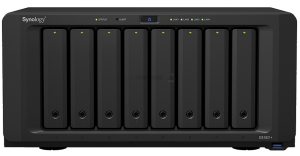


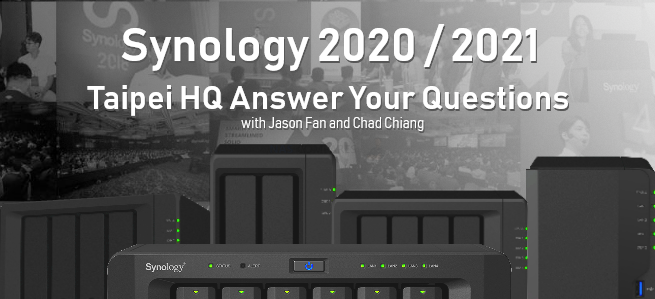



I had problem about my synology nas
And Steve Baker
Technical Support Engineer write me about my problem that
We are sorry to hear that your DS218 has to be reset. This is likely caused by an issue in the DSM operating-system.
We understand that you are worried about losing your data. Please rest assured, your data should not be affected by the reset as the OS and data are stored in separate partitions on the drives. When re-installing the OS, the system should normally not touch the data-partitions of your drives.
I beleived and i did what he said now all my data erased omg i shocked after sir Steve Baker dissepeared i am alone there is nothing in my hands
Synology is regret bad nas choose qnap there isnt good support for problemss !!!
There is no good service and support becarefullll!!!
REPLY ON YOUTUBE
Wonderfull video, learned a lot
REPLY ON YOUTUBE
Will it handle Jellyfin
REPLY ON YOUTUBE
Would you recommend this nas also by now or are there any better options for 2023?
Important. Short Depth, Rackmount, minimum of 4 bases
Optional should be available if not directly integrated: SFP+ slot
REPLY ON YOUTUBE
Such an awesome video, your attention to detail and explanations are fabulous. I found this test so helpful. Excellent, and thank you.
REPLY ON YOUTUBE
I would highly advise that you NEVER use r/w caching. Stick to read only. Even in a Raid 1 config there is a high probability that you lose your volume if as SSD goes down.
REPLY ON YOUTUBE
No nvme is the killer for me. Thanks for the great review
REPLY ON YOUTUBE
Copying same file directory with same files inside has an automatic caching of them, not mentioned in the test. Good test to see how things work, but again, inherent caching effects built into the system must have been used, or the software is not too great at cache control.
REPLY ON YOUTUBE
Couldn’t you map a shared folder to a drive letter, then run something like Crystal Disk Mark on the mapped drive?
REPLY ON YOUTUBE
Is the controller Sata 3 or 6?
REPLY ON YOUTUBE
The data itself is on an HDD from the beginning. Seems you are testing the read limits of your HDD, thats all. I’m copying 12GB of data to an NVMe storage in less than 1 minute, and thats with USB3.0. With thunderbolt it’s only a few seconds. The limiting factor is then your connection speed like 1GBE or 10GBE. Copying internally without any connection should do the best out of it, but your limit is the reading speed of your HDD, where the data is stored.
REPLY ON YOUTUBE
Gen3 or gen4 NVME? Does it matter? Thanks!
REPLY ON YOUTUBE
….Should i buy 2x Samsung SSD 970 EVO Plus 250GB, M.2 (MZ-V7S250BW) …for a DS920+ ??? …many people say if the „Wear_Levelling_Count“ (Samsung Life Span Figure) is reached they (Synology) shut it off. And many people say it only last about 2 years!
REPLY ON YOUTUBE
Really wish your videos had time stamps, intro/abstract and conclusion section. Great videos but its hard to deicde whether they are worth watching in full
REPLY ON YOUTUBE
I beleiev that cache is more important in applications such as VM’s or docker .. mainly applications which repeat a lot like running mqtt for a vast automation … where the same data will go back and forth on a daily basis .. that’s where the cache would excel ..
I also believe that you don’t need the nvme for cache as SATA/sata nand will suffice … Unless you have 10gbit network which requires 1gb to be transfered in ms which is not for home applications anyhow ..
REPLY ON YOUTUBE
My eyes hurt watching this!
REPLY ON YOUTUBE
Any other half depth recommendations?
REPLY ON YOUTUBE
Your 5 versus 5 videos are the best for people who are familiar with many models and like seeing the cliff notes.
REPLY ON YOUTUBE
Thanks for the detailed comparisons!
REPLY ON YOUTUBE
Secondly is the data encrypted in the NVMEs or exposed?
REPLY ON YOUTUBE
Imposible to read….bad video.
REPLY ON YOUTUBE
Great videos, thanks. It would be interesting to see the difference of spending money on the 4gb RAM upgrade instead of NVME in terms of file server performance (ignoring Docker benefits).
REPLY ON YOUTUBE